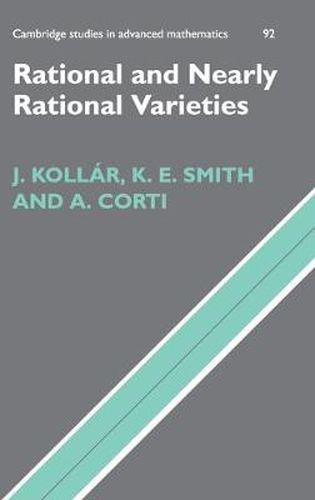Readings Newsletter
Become a Readings Member to make your shopping experience even easier.
Sign in or sign up for free!
You’re not far away from qualifying for FREE standard shipping within Australia
You’ve qualified for FREE standard shipping within Australia
The cart is loading…






The most basic algebraic varieties are the projective spaces, and rational varieties are their closest relatives. In many applications where algebraic varieties appear in mathematics and the sciences, we see rational ones emerging as the most interesting examples. The authors have given an elementary treatment of rationality questions using a mix of classical and modern methods. Arising from a summer school course taught by Janos Kollar, this book develops the modern theory of rational and nearly rational varieties at a level that will particularly suit graduate students. There are numerous examples and exercises, all of which are accompanied by fully worked out solutions, that will make this book ideal as the basis of a graduate course. It will act as a valuable reference for researchers whilst helping graduate students to reach the point where they can begin to tackle contemporary research problems.
$9.00 standard shipping within Australia
FREE standard shipping within Australia for orders over $100.00
Express & International shipping calculated at checkout
The most basic algebraic varieties are the projective spaces, and rational varieties are their closest relatives. In many applications where algebraic varieties appear in mathematics and the sciences, we see rational ones emerging as the most interesting examples. The authors have given an elementary treatment of rationality questions using a mix of classical and modern methods. Arising from a summer school course taught by Janos Kollar, this book develops the modern theory of rational and nearly rational varieties at a level that will particularly suit graduate students. There are numerous examples and exercises, all of which are accompanied by fully worked out solutions, that will make this book ideal as the basis of a graduate course. It will act as a valuable reference for researchers whilst helping graduate students to reach the point where they can begin to tackle contemporary research problems.